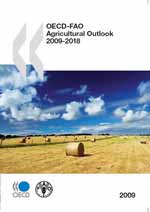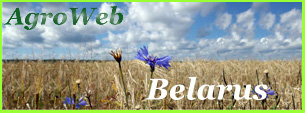|
The United Nations Food and Agriculture Organization (FAO) reports: Food prices are on the rise again
Grain stocks buffer against 2008 crisis replay
9 December 2009 – Global food prices are on the rise again, FAO reported, with the agency’s Food Price Index registering four straight months of increases.

|
According to FAO’s latest Food Outlook, the Index – a food basket composed of cereals, oilseeds, dairy, meat and sugar – averaged 168 points in November, the highest since September 2008.
However, that is still 21 per cent below its peak in June 2008, the agency said in a news release. Prior to the surge in prices in 2007-2008, the Index never exceeded 120 points and, for most of the time, was below 100 points.
FAO added that current market conditions are different from those that triggered the food price crisis that started two years ago.
|
“At the onset of the price surge in 2007, FAO identified a number of possible causes contributing to the price rise: low levels of world cereal stocks; crop failures in major exporting countries; rapidly growing demand for agricultural commodities for biofuels and rising oil prices,” stated the report.
“As the price strengthening accelerated, several other factors emerged to reinforce the upheaval; most importantly, government export restrictions, a weakening United States dollar and a growing appetite by speculators and index funds for wider commodity portfolio investments on the back of enormous global excess liquidity.
“What made the 2007/08 price spike exceptional was the concurrence of so many factors culminating in an unprecedented price rally and the fuelling of volatility,” the report added.
The agency said that world cereal stocks are at more “comfortable” levels today and, in general, supplies held by exporters are more adequate to respond to rising demand than they were during the price surge period.
FAO said that while the initial outlook for cereals points to a decline in world output compared to 2008, production in 2009 is still expected to be about four per cent higher than in 2007.
World meat prices were an average 8 per cent lower in the first ten months of 2009 than the same period last year. Meanwhile, dairy prices are increasing again, with traded milk powders the fastest rising product, and there have also been moderate price increases over several months for fish and fishery products, demand for which had suffered due to the global economic slowdown.
“A healthy stock situation and good production prospects reduce the risk of a major price surge over the next six months, but FAO will be keeping a very close eye on developments,” said Hafez Ghanem, FAO Assistant Director-General for Social and Economic Development.
|




